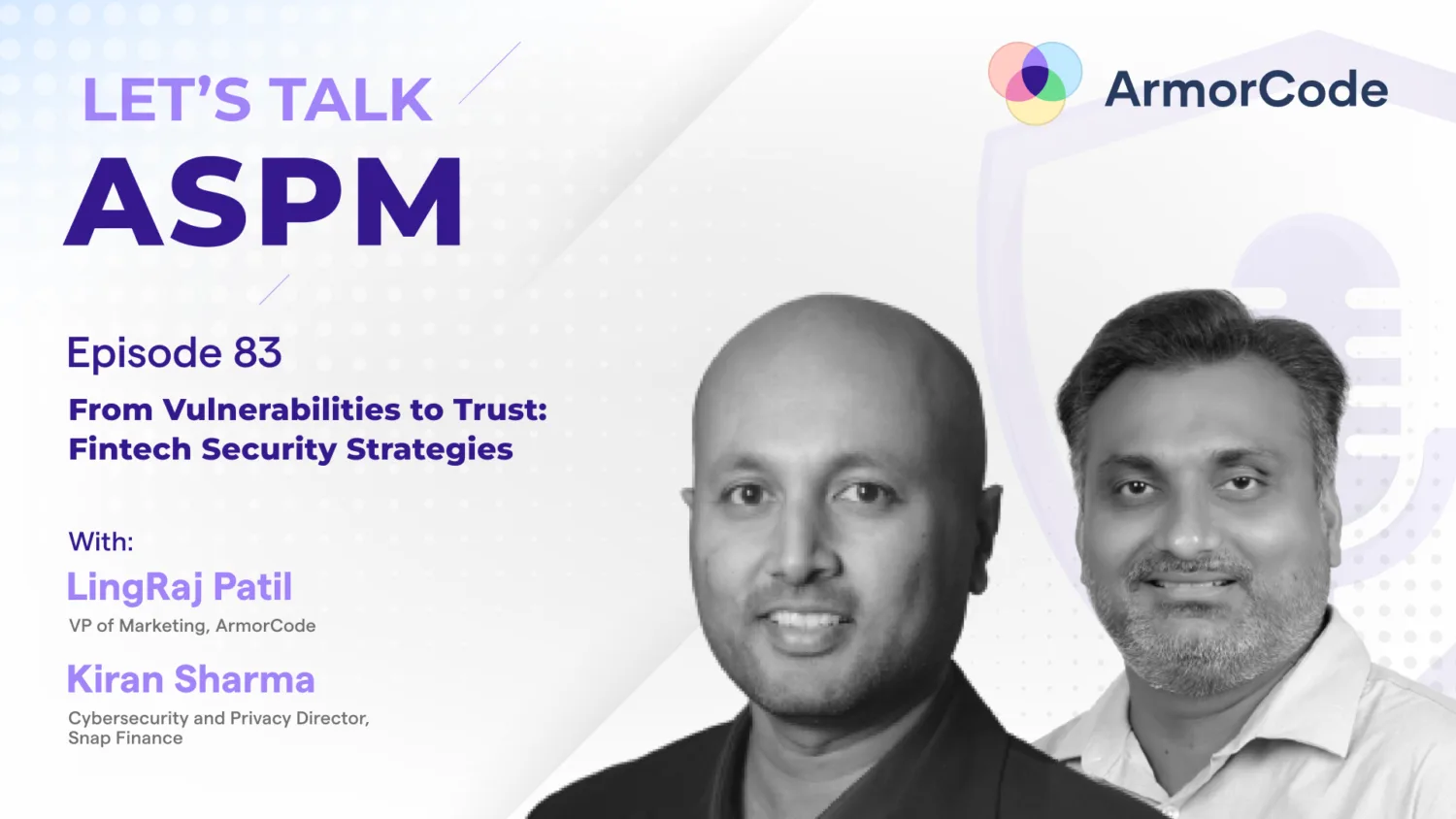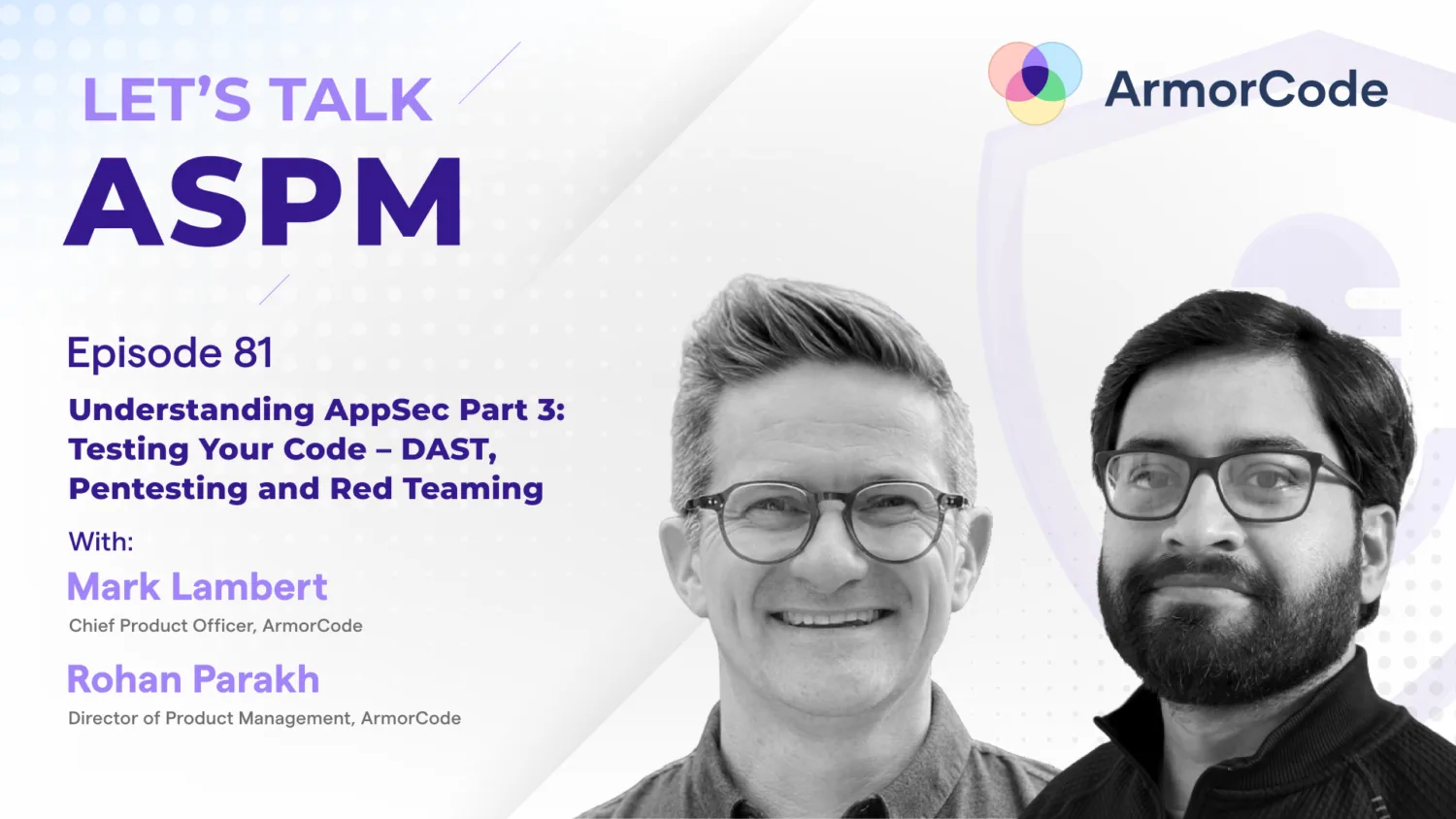Defining ASPM
Episode 57
February 7, 2024

Mark is joined by a fellow security expert from team ArmorCode to begin answering a hot question among security professionals tasked with the impossible: what is ASPM? Along the way, we uncover what trends are setting the stage, why the abundance of security tools in the market, and how ASPM drives prioritization of software risk management efforts.
Check out the State of AppSec 2023 Report with insights on the “best-of-breed” approach to security tooling
Read the latest Gartner® Research on adopting AI & Cybersecurity in 2024



